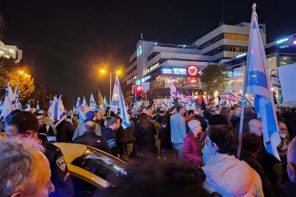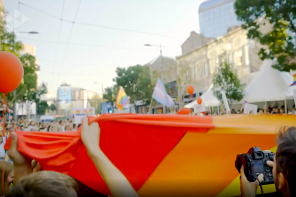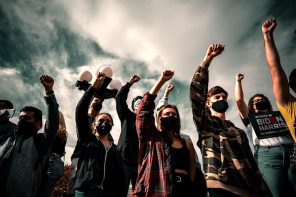Since 1978, the gay and lesbian community has used a rainbow flag to symbolize the diversity of the community. Since then the flag has become ubiquitous at gay and lesbian events and pride marches. The symbol has become so associated with gay and lesbian rights that back in 2000, the University of Hawaii at Manoa changed its sports teams’ name from “Rainbow Warriors” to “Warriors” and redesigned its logo to eliminate a rainbow from it.
Now, according to One News Now, one group on the religious right is demanding that gays and lesbians give up their grip on the rainbow.
Dr. Jennifer Roback Morse of the San Diego-based Ruth Institute [a project of the National Organization for Marriage] rightly argues that the rainbow is a sign of God’s covenant with man, and she says proponents of Proposition 8—California’s measure that passed in 2008 to define marriage as between a man and a woman—are the original “rainbow coalition.”
“Proposition 8 was passed by a great grassroots coalition that included people from all across the religious traditions, and also people of every race and color,” Morse recognizes. “We are the real rainbow coalition. The gay lobby does not own the rainbow.”
No, gays and lesbians don’t own the rainbow—but the community is not the first to use the rainbow flag as a symbol. The rainbow shows up in many flags including in Peru and Ecuador to represent Incan territory. It has also been used by the peace movement as well as the International Cooperative Alliance.
What all these uses have in common is that the rainbow flag represents diversity, as Morse rightly claims. However, the overarching meaning of the rainbow flag is one of inclusion. When gay and lesbian people fly the rainbow flag they are not seeking “special rights” or making any special claim to the rainbow. Instead, the rainbow flag is one of inclusion—the full inclusion the community seeks within the larger society—and also the inclusion it invites. Gays and lesbians fly the rainbow flag as an invitation to people like Morse to join them in one inclusive humanity.
Herein lies the difference: while Morse may see the diversity in the anti-gay rights movement, she fails to understand that rainbows mean more than that. Her movement is about exclusion and oppression of a particular group—and it’s difficult to imagine the rainbow ever representing such a movement.
The mere fact that Morse wants the rainbow back simply underscores the power of the symbol. Every time she sees a rainbow she thinks of the gay and lesbian community. While she may not like the association, at least it keeps the gay and lesbian community in her mind, and perhaps one day, she’ll let them into her heart as well.




